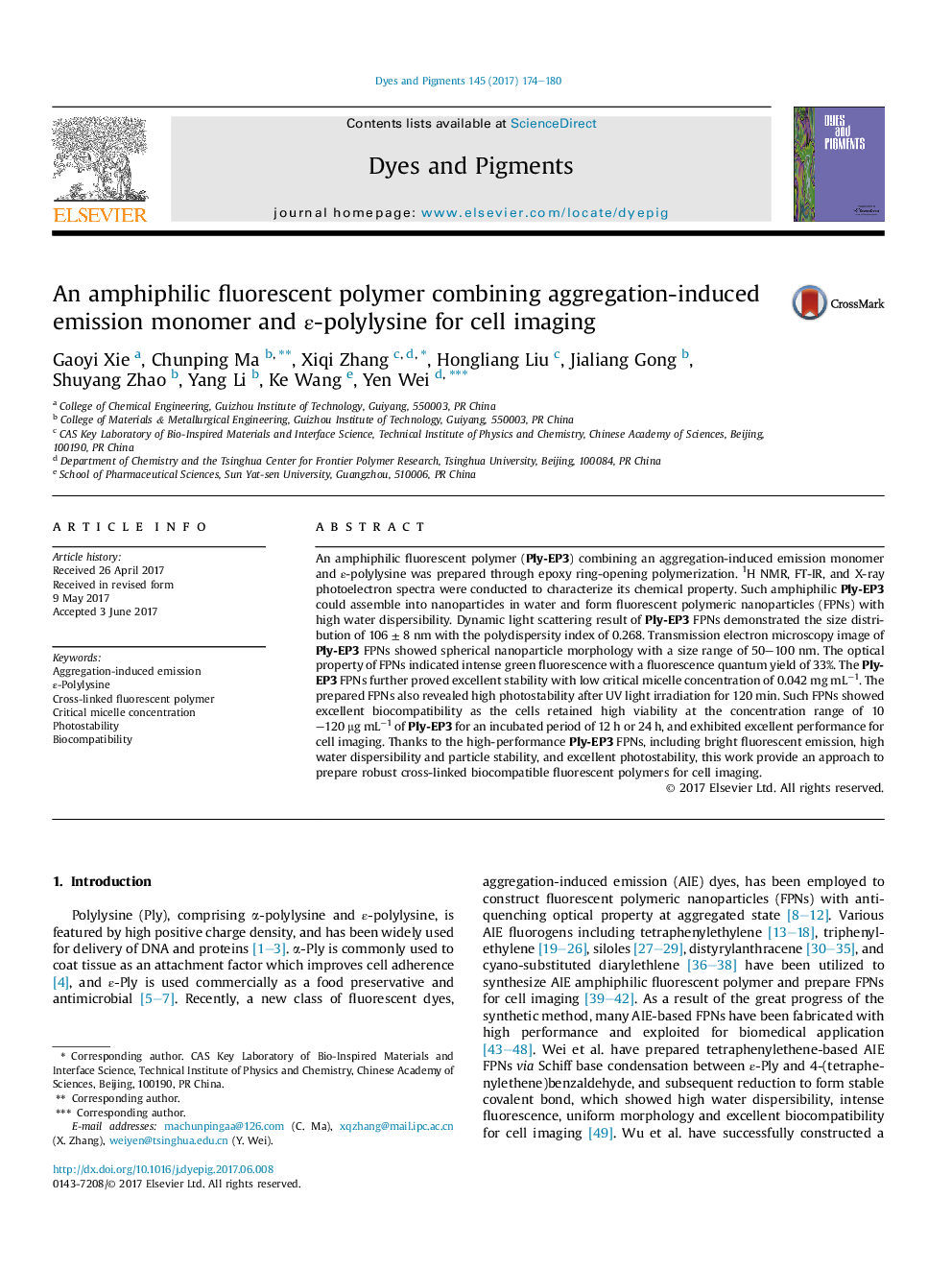| Article ID | Journal | Published Year | Pages | File Type |
|---|---|---|---|---|
| 4765769 | Dyes and Pigments | 2017 | 7 Pages |
Abstract
An amphiphilic fluorescent polymer (Ply-EP3) combining an aggregation-induced emission monomer and ε-polylysine was prepared through epoxy ring-opening polymerization. 1H NMR, FT-IR, and X-ray photoelectron spectra were conducted to characterize its chemical property. Such amphiphilic Ply-EP3 could assemble into nanoparticles in water and form fluorescent polymeric nanoparticles (FPNs) with high water dispersibility. Dynamic light scattering result of Ply-EP3 FPNs demonstrated the size distribution of 106 ± 8 nm with the polydispersity index of 0.268. Transmission electron microscopy image of Ply-EP3 FPNs showed spherical nanoparticle morphology with a size range of 50-100 nm. The optical property of FPNs indicated intense green fluorescence with a fluorescence quantum yield of 33%. The Ply-EP3 FPNs further proved excellent stability with low critical micelle concentration of 0.042 mg mLâ1. The prepared FPNs also revealed high photostability after UV light irradiation for 120 min. Such FPNs showed excellent biocompatibility as the cells retained high viability at the concentration range of 10-120 μg mLâ1 of Ply-EP3 for an incubated period of 12 h or 24 h, and exhibited excellent performance for cell imaging. Thanks to the high-performance Ply-EP3 FPNs, including bright fluorescent emission, high water dispersibility and particle stability, and excellent photostability, this work provide an approach to prepare robust cross-linked biocompatible fluorescent polymers for cell imaging.
Keywords
Related Topics
Physical Sciences and Engineering
Chemical Engineering
Chemical Engineering (General)
Authors
Gaoyi Xie, Chunping Ma, Xiqi Zhang, Hongliang Liu, Jialiang Gong, Shuyang Zhao, Yang Li, Ke Wang, Yen Wei,
